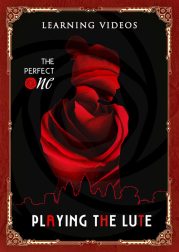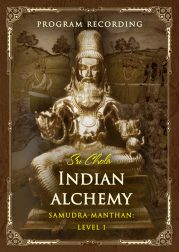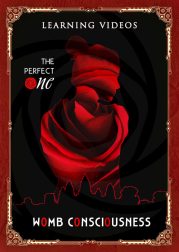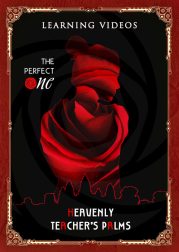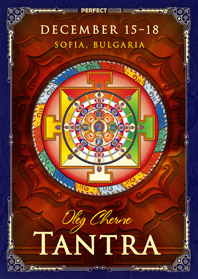

Tantra
Program
Tantra is a process associated with the activation of the body, mind and energy. This process reveals and enhances all associated experiences, this is why we need to keep the mind under control. To do this we need to separate the state of the body from the state of the mind. The first is mastered through ecstasy, a certain state of excitement, the second – through concentration, the tantric mind.
To a large extent, tantra is not aimed at clarifying the truth, but at the quality of experience. The fundamental concepts of tantra are associated with the simultaneous acceptance of the spirit andthe various perspectives to it. Thus, tantra is a function associated with the ways of changingone’s state and experiences. And if we consider it as a function, then it is a kind of scheme, a technological process, cantered not around the doctrine, but around its implementation.
The concepts of tantra should be applied daily. Tantra is an inner doctrine, based on the laws of the practice and the circumstances of life, linked to the nature of the tantric mind.
Although tantra is a concept usually associated with Indo-Tibetan traditions, it has its application everywhere and in everything. Anything that takes you beyond the ordinary, beyond all limitations, is tantra. Tantra is the organization of the spirit, its cultivation. Tantragoes beyond human thought, and this is the main point in itscomprehension. One cannot define tantra without diving into the ocean of practical tantrism.
Blocks of the program
-
Deva Tantra
Deva Tantra helps us unite with our inner strength, and directs us towards comprehending another reality. It helps us naturally improve our tone, brings about natural change, yet not transformation. Deva Tantra reveals one’s personal tantric nature, realizes the potential of the mind and body for natural transformation, and improves our properties and qualities in a dreaming or a resting state.
The concepts of ‘shining’ or ‘illumination’ are central to Deva Tantra. This radiance is associated with the primordial mind which is manifested in one of the celestial spheres that can communicate with us. So, this type of tantra is associated with the original all-generating force.
We need to understand that there is a source within us that underpins our very existence. It is also perhaps our ultimate refuge. The basic concepts of tantra unite the ideas of time and the mind. In Deva Tantra this is based on one’s personal nature and the primordial creative force. Therefore, the task of the tantric path is to help us understand this creative force, comprehend the ‘nigama’, true nature. Deva Tantra is also associated with the integral conceptualization of tantra, which leads to a state called ‘agama’ or ‘arrival’.
-
Kubjika Tantra
KubjikaTantra represents the second integral principle, which can be described as ‘toning’. This type of tantra helps shape, separate, and compare the form, which leads to a state where all destructive processes are prevented. KubjikaTantra helps us connect with energy, by following the example of, say, the tenaga-dalam tradition; it also helps us gather power and twist it into a sphere, which enables us to cultivate energy inside.
KubjikaTantra helps us understand the all-generating and all-destroying form. It also helps us experience the process of filling with power. It can also reveal the very essence of tantra, associated with an improvement of one’s inner state resulting from the consolidation of inner power, which is essential for achieving the state of ‘sadhana’, or the state of inner unity.
The most important goal of KubjikaTantra is to help you interact with your spirit, which allows you to effectively interact with the universe. This process is based on mystical breathing, which is used for strengthening or revitalizing many systems of the body by developing their energy field. This type of tantra improves primarily one’s physical state, it transforms and develops the energy field of the body, and leads to the formation of hidden power.
This tantra practice is based on the development of bioelectricity, which allows you to attain a state considered to be the highest spiritual initiation. From the point of view of tantra, this is the art of integrating and experiencing inner power, which leads to the true principle of suchness (tattva). This true power is also understood as ‘mercury’, that which holds and forms power. It can manifest itself in various aspects of the tantric arts, yoga, or in the Filipino healing art of ‘hilot’.
-
Kumari Tantra
Kumari Tantra is the third form of tantric integration, also called ‘drinking the right juice’, or ‘using the breath as amrita nutrition’. This is a type of absorbing tantra where breathing is the dominant source of nutrition.
This tantra is explicitly perceived through the body, and can be studied either as an independent doctrine or through the prism of several traditions:
- Khmer Tantra – focuses on the reproduction and consumption of amrita;
- Vipasana-tantra – the practice of contemplative breathing;
- Ta-moko – Polynesian tantra.
Kumari Tantra uses the breath to support energy work and achieve inner unity of the body and mind. This type of tantra allows you to master the unlimited source of nutrition necessary for the improvement of the body.
An example of this type of tantra is the tantric Dance of the Apsaras. The movements in this dance are seen as a special form of nutrition, which (like food) can help the person transform and develop. Meanwhile, the act itself is perceived as an offering, and the recipients of this offering are primarily our body, mind and spirit.
Kumari Tantra is an important type of tantra, which can be seen as a form of cultivating oneself for experience. This requires the formation of a mental attitude to the concept of tantra, which is built by harmonizing our relations with everything we encounter. To some extent, kumaritantra is the ethics and aesthetics of the tantric path with the practical task of establishing control over the breath. This requires consistent experience and, of course, will.
Those who are interested in developing through tantra should use their practical path to understand what nourishes their brain. However, we must understand that tantric nutrition of the brain is possible only when we do not depend on the nutrition of the stomach. And first of all, we need to be able to transform our nutrition fundamentally, switch over to breathing, and use the breath as nutrition, i.e. attain amrita nutrition.
Kumari Tantra is important for inner growth and the creation of our inner being. A person’s power comes from what nourishes it. If we do not learn to nourish the body through breathing, we will not be able to use nourishment as a source of mental power. Therefore, we will continue to depend on animal power. And mental power is what shapes our experiences (not the emotions), which determine the quality of our spiritual process. Tantra provides us with a type of experience resulting from the raising of aperson’stonality.
-
Mahanirvana Tantra
Mahanirvana Tantra is the scheme underlying transformation. This direction of tantra focuses on the structure of one’s actions, presenting the cosmogonic dance of Shakti as a true tantric process aimed at harmonization. MahanirvanaTantra forms a directed image of fluidity, which has integrity, continuation and fulfilment.
The process of merging Shakti with Shiva is considered a selfless embrace, with no difference in content or function. Only by knowing the undivided we can be freed from mutability. The true tantric substance is the juice squeezed out of the essence of tantra, not our definition of it. Tantra is an inner, directed effort related to the stages of creation. The MahanirvanaTantra reflects the multiplicity of the single whole of the waters of the Ganges or Mekong that wash and cleanse our body and our spirit.
Thus, MahanirvanaTantra is a type of ritual tantra, which is characterized by the concepts of dakshinachara (right hand path) and vamachara (left hand path). In dakshinachara, the main sources of the tantric river are the mind and mentality, whereas in vamachara, the process of creation itself is important, the flow connected with the female power of Shakti. Behind these concepts lies the supreme principle of merging (maithuna) with power, which becomes the main source of attraction to tantra. This power consists of five elements:
- the body of the practitioner;
- the energy flow;
- retention of the mind;
- raising the tone;
- merging with the practice.
Over time, the complex concepts and practical experiences led to the division of tantra into two streams offering different interpretations. Thus,dakshinachara directs some tantrists to asceticism and mortification of the flesh, whereas vamachara directs others to the satisfaction of sensual desires. So, unless this merging with power is achieved, tantra is forced to split into many divisions, based on ideological interpretations, and not on true unity.
Schedule
- DateMasterLocal time
- 15 December (Wed.), 202117:30-21:30
- 16 December (Thu.), 202117:30-21:30
- 17 December (Fri.), 202117:30-21:30
- 18 December (Sat.), 202117:30-21:30
For more information
+359 89221-58-24,+359 98884-94-85, info@inbi.bg
Venue
Bulgaria, Sofia, Park Hotel MOSKVA
Pay attention
Discounts when visiting one of the programs:
- “Daoist Alchemy for Women. Spiritual Repository” 20—29 December
- “The Daoist Body” 3—15 January
- “Postulate of the Red Talisman” 17—20 January
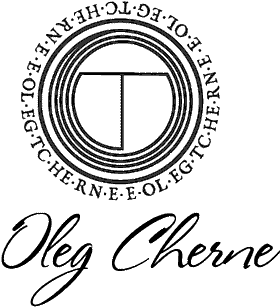
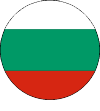
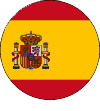

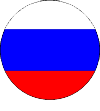


 15 December — 18 December, 2021
15 December — 18 December, 2021  Sofia, Bulgaria
Sofia, Bulgaria

